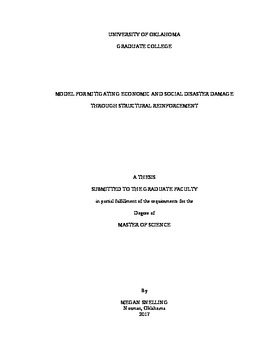| dc.description.abstract | Natural disasters have both severe negative short-term consequences on community structures, inhabitants, and long-term impacts on economic growth. In response to the rising costs and magnitude of such disasters to communities, a characteristic of modern community development is the aspiration towards resilience. An effective and well-studied mitigation measure, structural interventions reduce the value lost in buildings in earthquake scenarios. Both structural loss and socioeconomic characteristics are indicators for whether a household will dislocate from their residence. Therefore, this social vulnerability can be mitigated by structural interventions and should be minimized as it is also indicator of indirect economic loss. This research presents a model for mitigating direct economic loss and population dislocation through decisions regarding the selection of community structures to retrofit to higher code levels. In particular, the model allows for detailed analysis of the tradeoffs between budget, direct economic loss, population dislocation, and the disparity of dislocation across socioeconomic classes given a heterogeneous residential and commercial structure set. The mathematical model is informed by extensive earthquake simulation and as well as recent dislocation modeling from the field of social science. The non-dominated sorting genetic algorithm II (NSGA-II) is adapted to solve to model, as the dislocation model component is non-linear. Use of the mitigation model is demonstrated through a case study using Centerville, a test bed community designed by a multidisciplinary team of experts. Details of the retrofit strategies are interpreted from the estimated Pareto front. | en_US |
